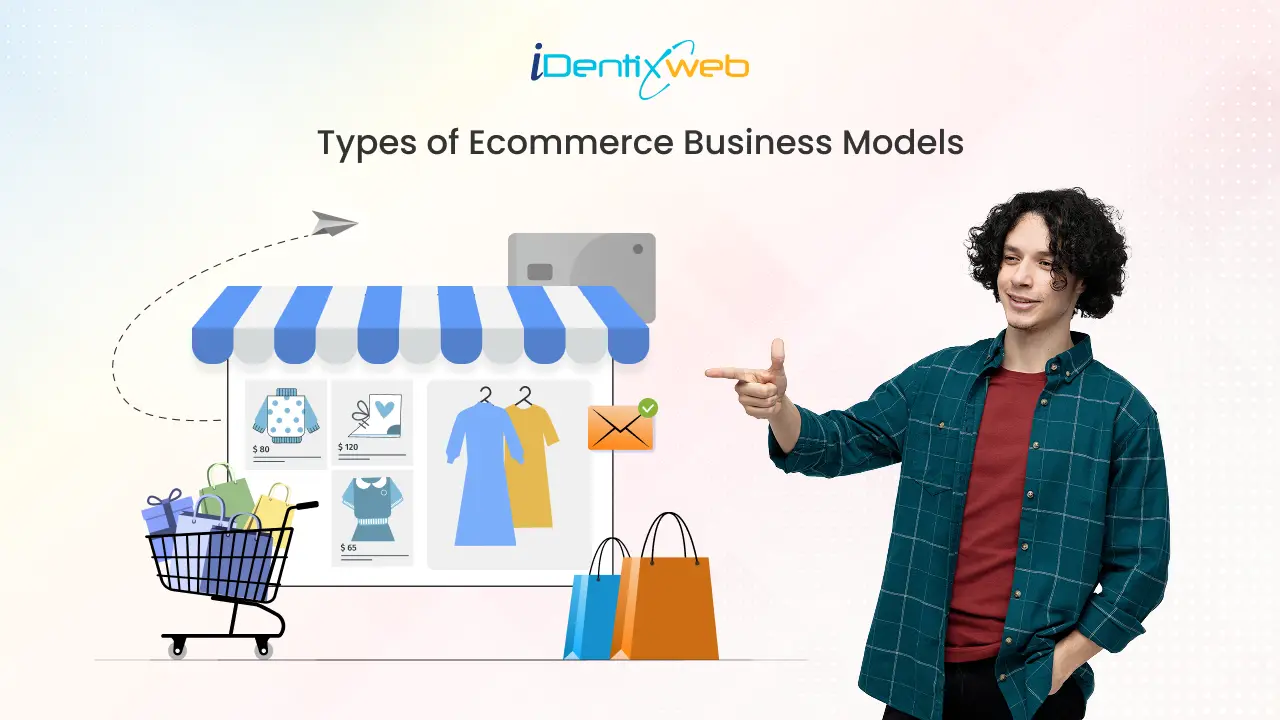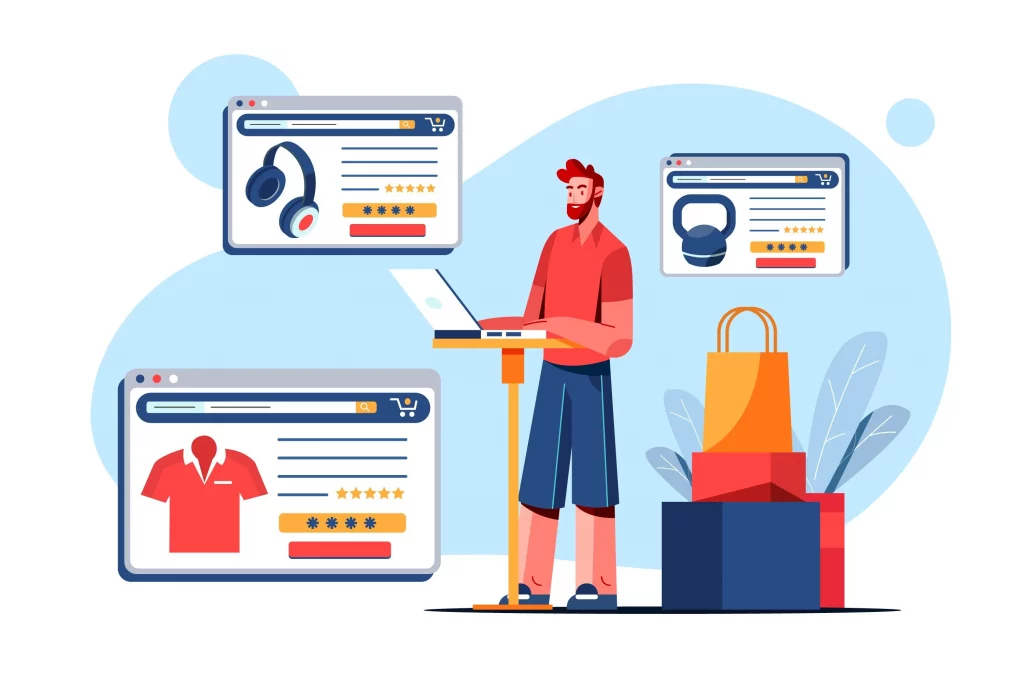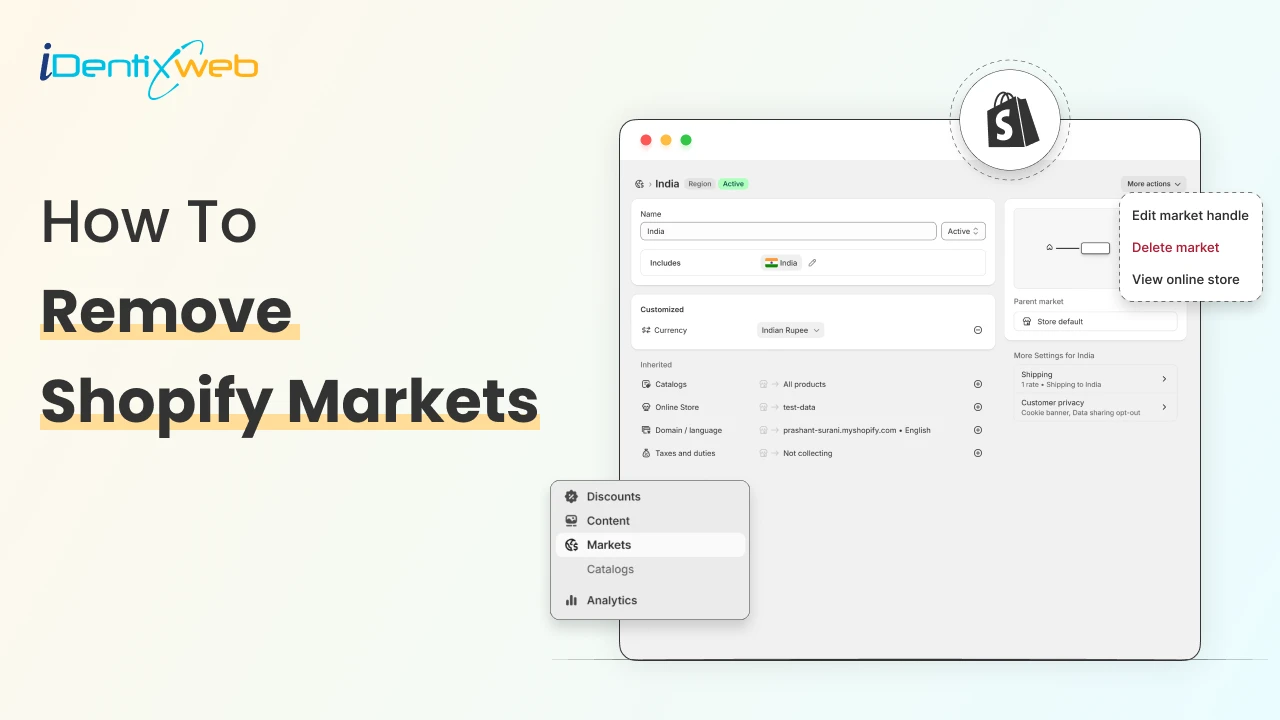
Ecommerce is a fast-growing industry that offers a variety of business models. Choosing the right ecommerce business model is crucial for success, as it impacts everything from marketing strategies to customer engagement. This article will explore the various types of ecommerce business models and guide you in choosing the best fit for launching your business.
We understand that selecting the right business model is crucial for building a successful online business. Our Shopify experts help scale your store, and we've seen firsthand how choosing the right model can transform an online business.
What is Ecommerce?
Ecommerce is the buying and selling of goods or services online. It includes setting up an online store, marketing products, processing payments, handling customer service, and more.
In 2025, the global eCommerce market is projected to reach approximately $8.3 trillion, marking a 55.3% increase since 2021. The B2B (Business to Business) model continues to dominate, accounting for over 65% of ecommerce revenue . D2C (Direct to Consumer) brands have gained significant traction, with companies in India experiencing 20-25% growth.
Below are key factors to consider when making this decision:
Key Considerations for Selecting the Right Business Model
Target Market and Customer Segments
Identify your target market and the customer segments you want to serve. Understand their needs, preferences, and buying behaviors. Choose a business model that aligns with these factors and offers a strong value proposition.
Product or Service Offering
Evaluate the nature and uniqueness of your products or services. Consider whether your offerings are better suited for direct sales, partnerships, subscriptions, or other models. Assess scalability and profitability within your chosen model.
Competitive Landscape
Understand the competition in your industry and the business models they use. Look for gaps or opportunities to create a unique or hybrid model. Offer a value proposition that sets you apart and improves upon existing models.
Operational Considerations
Consider your operational capacity, resources, and infrastructure. Assess aspects like inventory management, order fulfillment, shipping logistics, and customer service. Choose a model that fits with your operational strengths and reduces complexities.
Revenue Generation and Profitability
Examine the revenue streams and profitability potential of each business model. Focus on pricing, margins, recurring revenue, and cost structures. Select a model that supports sustainable revenue and aligns with your financial goals.
Risk and Scalability
Evaluate the risks each model presents, such as market fluctuations and regulatory factors. Assess the scalability of the model and its ability to support future growth. Select a model that balances risk with growth potential to ensure long-term success.
Branding and Marketing Strategy
Consider how the business model aligns with your branding and marketing efforts. Evaluate how it fits with your desired brand image, customer acquisition methods, and overall marketing strategy. Choose a model that effectively communicates your brand’s value to the target audience.
Types of Ecommerce Business Models for Businesses

1. B2B (Business to Business)
B2B is one of the most common and lucrative types of ecommerce business models. In this model, transactions are conducted between businesses. For instance, a company might sell raw materials to another company that manufactures products.
Benefits of B2B Ecommerce:
- Larger order volumes and more substantial revenue.
- Recurring orders, which contribute to consistent cash flow.
- Long-term business relationships and partnerships.
Example: Suppliers of wholesale products to retailers or manufacturers who purchase industrial equipment for other businesses.
2. B2C (Business to Consumer)
B2C is the most common ecommerce model and refers to businesses selling products directly to individual consumers. Think of popular online stores like Amazon, Walmart, and your Shopify store.
Benefits of B2C Ecommerce:
- A wide customer base is achieved through a focus on individuals.
- Easier marketing and customer acquisition through digital channels.
- Potential for high-volume sales.
Example: A clothing store selling fashion directly to consumers through an online shop.
3. C2C (Consumer to Consumer)
In a C2C eCommerce model, consumers sell directly to other consumers. This model is most commonly seen in online marketplaces such as eBay, Craigslist, or Poshmark. It allows individuals to sell their own products to others, often used items.
Benefits of C2C Ecommerce:
- Low startup costs since businesses do not need inventory.
- Easier to manage and run due to minimal business overhead.
- Peer-to-peer transactions increase trust and transparency.
Example: Platforms that allow users to sell secondhand goods to each other, such as eBay and Craigslist.
4. C2B (Consumer to Business)
While this model is less traditional, C2B is becoming increasingly popular. It involves consumers selling their products or services to businesses. This can include freelancers offering services or photographers selling images to companies for use in advertising.
Benefits of C2B Ecommerce:
- Empower consumers to monetize their talents.
- Businesses can source specialized services or products from individuals.
- Flexible for businesses looking for specific talents or resources.
Example: A freelance web designer selling services to a company, or a photographer selling stock images to businesses.
5. B2G (Business to Government)
B2G eCommerce is a business-to-government model, in which businesses provide goods or services to government agencies. The process is typically more formal and regulated.
Benefits of B2G Ecommerce:
- Access to large-scale contracts and long-term partnerships.
- High-value projects and substantial revenue.
- Reliable, structured processes.
Example: A company that supplies educational materials to the government or contractors providing equipment to public institutions.
6. D2C (Direct to Consumer)
D2C refers to companies that sell their products directly to consumers, bypassing traditional distribution channels such as wholesalers or retailers. This model has grown significantly with brands using their websites and social media platforms.
Benefits of D2C eCommerce:
- Direct control over branding, pricing, and customer experience.
- Greater margins due to the absence of intermediaries.
- Direct interaction with customers enables better market insights.
Example: A skincare brand selling directly to consumers via its online store.
7. Subscription-Based Ecommerce
In a subscription model, businesses offer their products or services on a recurring basis, usually monthly or annually. This model works well for consumables like food, beauty products, and even software.
Benefits of Subscription-Based Ecommerce:
- Predictable revenue streams.
- Increased customer retention through regular deliveries.
- Ability to build brand loyalty and community.
Example: Meal kit delivery services like Blue Apron or streaming services like Netflix.
8. Marketplace Ecommerce
Marketplace eCommerce refers to platforms where multiple sellers list their products in a single marketplace. The marketplace operator handles payment processing, customer support, and more, while sellers focus on their products.
Benefits of Marketplace eCommerce:
- Wide range of sellers with diverse products.
- Trust and credibility associated with established platforms.
- Low startup costs for sellers.
Example: Online marketplaces such as Amazon, eBay, or Etsy.
9. B2B2C (Business to Business to Consumer)
In the B2B2C model, businesses sell to other businesses, which in turn sell to consumers. This hybrid model involves a partnership where one business supports another in reaching the end customer. An example of this would be a wholesaler providing products to a retailer, which then sells them directly to the consumer.
Benefits of B2B2C eCommerce:
- Extended reach through multiple business partnerships.
- Shared marketing and customer acquisition efforts.
- Flexibility in targeting both businesses and consumers.
Example: A software company providing services to a business that resells those services to end customers.
10. F2C (Factory to Consumer)
F2C is an emerging model where manufacturers sell directly to consumers, bypassing wholesalers and retailers. This model allows factories to capture more profit by removing intermediaries, and it has been gaining popularity with the rise of direct-to-consumer brands.
Benefits of F2C eCommerce:
- More control over the entire supply chain.
- Lower costs due to the removal of intermediaries.
- Greater profit margins.
Example: A furniture manufacturer selling directly to consumers through its website, cutting out the retailer middleman.
How to Choose the Best eCommerce Business Model for Your Store?

The best ecommerce model depends on several factors, including your product, target audience, and long-term goals. For instance:
- If you’re selling consumer goods directly to the end user, B2C or D2C may be the best option.
- If you are offering professional services, a C2B or freelance model could be more suitable.
- For large contracts or government services, B2G might be the most beneficial.
Conclusion: Making the Right Choice for Your ecommerce Business
Choosing the right ecommerce business model is a foundational step toward achieving success in the online marketplace. By understanding the various types, you can better tailor your marketing strategies, enhance the customer experience, and ultimately drive sales.
FAQs: Types of Ecommerce Business Models
1. What are 4 types of eCommerce business models?
The main types of eCommerce business models are B2B (Business to Business), B2C (Business to Consumer), C2C (Consumer to Consumer), and D2C (Direct to Consumer), where businesses or consumers engage directly in transactions.
2. How do I choose the right eCommerce business model?
Consider your target audience, product type, competition, and operational resources to determine the best model for your business.
3. Can I switch my eCommerce business model after starting?
Yes, you can pivot your eCommerce model, but it may require significant adjustments to your operations and marketing strategy.
4. What are the advantages of the B2C eCommerce model?
B2C offers a wide customer base, direct consumer engagement, and high-volume sales potential with easier marketing.
5. What are the challenges of a subscription-based eCommerce model?
Subscription models face challenges like customer churn, maintaining product quality, and managing recurring payments efficiently.




![Shopify Launches Winter 2026 Edition: RenAIssance [Key Updates Explained] Shopify Launches Winter 2026 Edition: RenAIssance [Key Updates Explained]](https://www.identixweb.com/wp-content/uploads/2025/12/11-12-Thu-Blog-Shopify-Launches-Winter-26-Edition_-RenAIssance-1.webp)

About the author
Bhavesha Ghatode
Explore Content with Bhavesha, a passionate and dedicated technical content writer with a keen understanding of e-commerce trends. She is committed to sharing valuable insights, practical assets, and the latest trends that can help businesses thrive in a competitive environment.